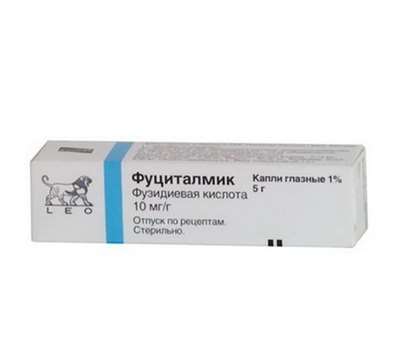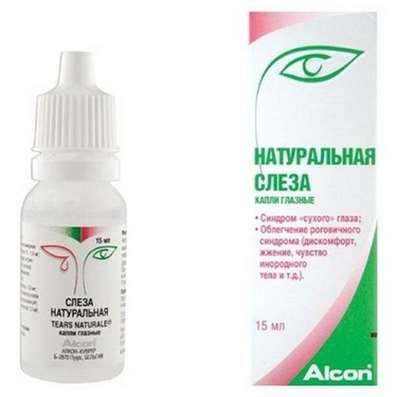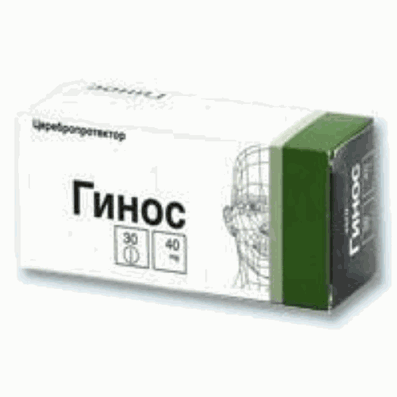Instruction for use: Seduxen
I want this, give me price
Active substance: Diazepam*
ATX
N05BA01 Diazepam
Pharmacological group:
Anxiolytics
The nosological classification (ICD-10)
F09 Unspecified organic or symptomatic mental disorder: Organic CNS damage; Organic Psychology; Endogenous psychosis; Psycho-organic syndrome; Psycho-organic senile syndrome; Psycho-organic syndrome in old age; Psychotic disorder in organic diseases of the central nervous system; The psycho-organic syndrome; Vascular psychosis; An age-old pseudomelanchia; Exogenous-organic psychosis; Endogenous psychosis; Pseudomelanchia senile
F10.4 Abstinent state with delirium: Alcoholic delirium; White fever alcoholic; Delirium; Delirious condition with alcoholism and drug addiction
F10.5 Alcoholic alcohol: Alcoholic hallucinations; Psycho-organic syndrome in chronic alcoholism; Alcoholic psychosis; White fever alcoholic; Delirium; Delirium with alcoholism; Acute alcoholic psychosis; Delirious condition with alcoholism and drug addiction; Acute alcoholic psychosis with autonomic disorders
F41.9 Unspecified anxiety disorder: Neurotic disorders with anxiety syndrome; Severe anxiety; Neurosis-like symptoms; Neuro-like disorders; Neuro-like conditions; Neuroses with anxiety symptoms; Neuroses with a sense of anxiety; Acute situational and stress anxiety; Acute attack of anxiety; Abrupt anxiety; Situational Anxiety Disorder; State of anxiety; Anxious-delirious component; Alarming state; Anxiety; Anxiety Disorders; Anxiety syndrome; Sense of anxiety; Alarm states; Chronic neurotic anxiety; Susto; Psychopathy with a predominance of anxiety and anxiety; Anxiety disorders in neurotic and neurosis-like states; Anxious neuroses; Anxious and delusional state; Acute situational stress alarm; Depressed mood with elements of anxiety
F48 Other neurotic disorders: Neurosis; Neurological diseases; Neurotic disorders; Neurotic condition; Psychoneurosis; Anxious-Neurotic Conditions; Chronic neurotic disorders; Emotional reactive disorders
F51.0 Insomnia of inorganic etiology: Situational insomnia; Situational sleep disorders
F95 Tiki: Tik child; Children's teak; Nerve Ticks in Children; Nervous tick; Tik
G24.8.0 * Hypertonus muscular: Increased muscle tone; Increased muscle tone; Spasm of striated muscle due to organic diseases of the central nervous system; Spasticity of muscles; Painful muscle spasms in diseases of the spine; Increased skeletal muscle tone
G47.0 Sleep disturbance and sleep disturbances [insomnia]: Insomnia; Insomnia, especially the difficulty of falling asleep; Desynchronosis; Prolonged sleep disorder; Difficulty falling asleep; Difficulty falling asleep; ; Insomnia; Short-term and transient sleep disorders; Short-term and chronic sleep disorders; Short or shallow sleep; Disturbance of falling asleep; Sleep disturbance, especially in the phase of falling asleep; Sleep disturbances; Sleep Disorders; Neurotic sleep disorder; Shallow shallow sleep; Shallow sleep; Unsatisfactory quality of sleep; Night Awakening; The pathology of sleep; Postmodern violation; Transient insomnia; Problems with falling asleep; Early Awakening; Early morning awakening; Sleep disorder; Persistent insomnia; Difficult to fall asleep; Difficulty falling asleep; Difficulty falling asleep in children; Difficulty falling asleep; Persistent insomnia; Deterioration of sleep; Chronic insomnia; Frequent nocturnal and / or early morning awakenings; Frequent nocturnal awakenings and a feeling of shallow sleep; Night Awakenings
G80.0 Spastic Cerebral Palsy: Little's Disease; Spastic Pallas; Little disease
M62.4 Contracture of muscle: Neurological contractures with spasm; Muscular contracture
O15 Eclampsia
O20.0 Threatening abortion: Threatening abortion; Miscarriage abortive; A spastic condition with a risk of abortion; Threatening miscarriage in the first trimester of pregnancy; Threat of abortion; Threatening abortion; The threat of spontaneous miscarriage; A threatening spontaneous miscarriage
O60 Premature birth: Preterm preterm; Preterm birth; Premature birth pains; Premature labor in the prehospital stage; Immobilization of the uterus before caesarean section; Immobilization of the uterus; Acute tocolysis; Threatening premature birth; Premature discharge of water; Prevention of premature birth; The threat of premature birth
R25.2 Cramp and spasm: Muscle spasms in tetanus; Pain syndrome with smooth muscle spasms; Pain syndrome with smooth muscle spasms (renal and biliary colic, intestinal spasm, dysmenorrhea); Pain syndrome with spasms of smooth muscles of internal organs; Pain syndrome with spasms of smooth muscles of internal organs (renal and biliary colic, intestinal spasm, dysmenorrhea); Painful muscular spasm; Mimic spasms; Muscular spasticity; Muscle spasms; Muscular spasms of central origin; Muscular spasticity; Muscle spasm; Neurological contractures with spasms; Night cramps in the extremities; Nocturnal cramps in the legs; Night cramps calf muscles; Symptomatic convulsive state; Vesta Syndrome; Spasm of smooth muscles; Spasm of smooth vascular musculature; Spasm of muscles; Spasm of striated muscle due to organic diseases of the central nervous system; Spasms of smooth muscles of internal organs; Muscle Cramps; Skeletal Muscle Cramps; Spastic states of the striated musculature; Spasmodic pain syndrome; The spastic condition of smooth muscles; Spasticity of skeletal musculature; Muscle cramp; Convulsions; Cramps of the calf muscles ; Convulsions of central origin; Convulsive condition; Convulsive Syndrome; Convulsive status in children; Tonic convulsions; Cerebral spastic syndrome; The phenomenon of a folding knife
R25.8.0 * Hyperkinesis: Hyperkinesis of Choreic; Hyperkinesis of central origin; Hyperkinesis rheumatic; Hyperkinesis; Floating tremor
R45.1 Anxiety and agitation: Agitation; Anxiety; Explosive excitability; Internal stimulation; Excitability; Excitation; Excitation acute; Psychomotor agitation; Hyperexcitability; Motor excitement; Cessation of psychomotor agitation; Nervous excitement; Restlessness; Night trouble; Acute stage of schizophrenia with excitation; Acute mental agitation; Paroxysm of excitation; Overexcitation; Increased excitability; Increased nervous excitability; Increased emotional and cardiac excitability; Increased agitation; Mental arousal; Psychomotor agitation; Psychomotor agitation in psychoses; Psychomotor agitation of an epileptic nature; Psychomotor paroxysm; Psychomotor fit; Symptoms of Excitation; Symptoms of psychomotor agitation; The state of agitation; A state of anxiety; Excitation status; A state of heightened concern; The state of psychomotor agitation; Conditions of anxiety; Excitation conditions; The state of excitement in somatic diseases; Excitation level; Feelings of anxiety; Emotional arousal
Z100.0 * Anesthesiology and premedication: Abdominal surgery; Adenomectomy; Amputation; Angioplasty of the coronary arteries; Carotid artery angioplasty; Antiseptic treatment of skin in wounds; Antiseptic treatment of hands; Appendectomy; Atheroctomy; Balloon coronary angioplasty; Vaginal hysterectomy; Venous bypass; Interventions on the vagina and cervix; Interventions on the bladder; Interference in the oral cavity; Reconstructive-reconstructive operations; Hand hygiene of medical personnel; Gynecological Surgery; Gynecological interventions; Gynecological operations; Hypovolemic shock during surgery; Disinfection of purulent wounds; Disinfection of the edges of wounds; Diagnostic Interventions; Diagnostic procedures; Diathermocoagulation of the cervix; Long-term surgeries; Replacement of fistulous catheters; Infection in orthopedic surgical interventions; Artificial heart valve; Kistectomy; Short-term outpatient surgery; Short-term operations; Short-term surgical procedures; Cryotyreotomy; Blood loss during surgical interventions; Bleeding during surgery and in the postoperative period; Laser coagulation Laserocoagulation; Laser retinopathy of the retina; Laparoscopy; Laparoscopy in gynecology; Likvornaya fistula; Small gynecological operations; Small surgical interventions; Mastectomy and subsequent plastic surgery; Mediastinotomy; Microsurgical operations on the ear; Mukinging operations; Suturing; Minor surgery; Neurosurgical operation; Eclipse of the eyeball in ophthalmic surgery; Orchiectomy; Pancreatectomy; Pericardectomy; The rehabilitation period after surgical operations; Reconvalence after surgical intervention; Percutaneous transluminal coronary angioplasty; Pleural Thoracocentesis; Pneumonia postoperative and post traumatic; Preparing for surgical procedures; Preparing for a surgical operation; Preparation of the surgeon's arms before surgery; Preparation of the colon for surgical interventions; Postoperative aspiration pneumonia in neurosurgical and thoracic operations; Postoperative nausea; Postoperative hemorrhage; Postoperative granuloma; Postoperative shock; Early postoperative period; Myocardial revascularization; Resection of the apex of the tooth root; Resection of the stomach; Bowel resection; Resection of the uterus; Liver resection; Small bowel resection; Resection of a part of the stomach; Reocclusion of the operated vessel; Gluing of tissues during surgical interventions; Suture removal; Condition after eye surgery; Condition after surgery in the nasal cavity; Condition after gastrectomy; Condition after resection of the small intestine; Condition after tonsillectomy; Condition after removal of duodenum; Condition after phlebectomy; Vascular Surgery; Splenectomy; Sterilization of surgical instrument; Sterilization of surgical instruments; Sternotomy; Dental surgery; Dental intervention on periodontal tissues; Strumectomy; Tonsillectomy; Thoracic surgery; Total gastrectomy; Transdermal intravascular coronary angioplasty; Transurethral resection; Turbinectomy; Removal of a tooth; Cataract removal; Removing Cysts; Removal of tonsils; Removal of myoma; Removal of mobile milk teeth; Removal of polyps; Removal of a broken tooth; Removal of the uterus; Removal of seams; Urethrotomy; Fistula of the luminal ducts; Frontoetmoidogamotomy; Surgical infection; Surgical treatment of chronic ulcers of extremities; Surgery; Surgery in the anus; Surgery on the large intestine; Surgical practice; Surgical procedure; Surgical interventions; Surgical interventions on the digestive tract; Surgical interventions on the urinary tract; Surgical interventions on the urinary system; Surgical interventions on the genitourinary system; Surgical intervention on the heart; Surgical procedures; Surgical operations; Surgical operations on veins; Surgical intervention; Vascular Surgery; Surgical treatment of thromboses; Cholecystectomy; Partial resection of the stomach; Extraperitoneal hysterectomy; Percutaneous transluminal coronary angioplasty; Percutaneous transluminal angioplasty; Coronary artery bypass grafting; Extirpation of the tooth; Extirpation of infant teeth; Extirpation of pulp; Extracorporeal circulation; Extraction of the tooth; Extraction of teeth; Extraction of cataracts; Electrocoagulation; Endourological interventions; Episiotomy; Ethmoidotomy; Complications after tooth extraction
Composition and release form
Tablets - 1 table.
diazepam 5 mg
auxiliary substances: aerosil; magnesium stearic acid; talc; corn starch; lactose monohydrate
in a planar cell pack of 10; in the box 2 packs.
Solution for intravenous and intramuscular injection 2 ml; diazepam 10 mg
auxiliary substances: methylparahydroxybenzoate; propyl parahydroxybenzoate; sodium pyrosulfite; sodium citrate; alcohol 95%; glycofurol; propylene glycol; water for injections
in ampoules of 2 ml; in the box there are 5 ampoules.
Characteristic
Tranquilizer from the benzodiazepine group.
Pharmachologic effect
Mode of action - anticonvulsant, anxiolytic, myorelaxing, sedative.
It has a regulating effect on neurovegetative functions, reduces the night secretion of gastric juice.
Pharmacokinetics
Well absorbed. Cmax in plasma is achieved after 90 minutes. Binding to plasma proteins - 98%. Penetrates through the placenta, into the cerebrospinal fluid, is excreted in breast milk.
Metabolised in the liver. It is excreted by the kidneys (70%).
The indications of Seduxen
Neuroses of all kinds, as well as neurotic and psycho-like conditions with an anxiety syndrome with endogenous diseases, organic brain damage (including cerebral atherosclerosis); mental illness, accompanied by motor anxiety, agitation, sharp anxiety; nervous tension, anxiety in psychosomatic diseases, endogenous psychosis (as an auxiliary); epileptic status, marked, often recurring seizures (parenteral administration); epilepsy (as an auxiliary, including with mental equivalents); a state of anxiety accompanying diseases of internal organs; neurotic disorders in pediatric practice (anxiety, headache, sleep disturbance, enuresis, stubbornness reaction, tick, bad habits); spasms, rigidity of muscles, contractures; diseases accompanied by increased muscle tone, spasticity, or hyperkinesia; eclampsia; tetanus and all kinds of convulsive conditions; premedication before surgical operations; introductory anesthesia, premature birth or the threat of premature birth due to muscle spasm (only at the end of the third trimester of pregnancy).
Contraindications
Myasthenia gravis, acute attack of glaucoma, zakratougolnaya glaucoma, pregnancy (I trimester), children's age (up to 6 months.)
Application in pregnancy and lactation
Contraindicated in pregnancy. Care should be taken when prescribing during breastfeeding.
Side effects
From the side of the nervous system: at the beginning of treatment there may be increased fatigue, drowsiness (disappear spontaneously or with a decrease in the dose of the drug). Rarely - ataxia; in some cases, paradoxical reactions (agitation, anxiety, sleep disturbances).
Interaction
Potentiates the effects of tricyclic antidepressants, drugs that have an inhibitory effect on the central nervous system, muscle relaxants (caution should be exercised when combined).
Seduxen's solution is incompatible in one syringe with any other drugs.
Dosing and Administration
Inside, IV, IM.
Pills. The dose of the drug is selected individually, and it is necessary to take into account both the patient's condition and the response to treatment - only general instructions are given below. At the beginning of therapy it is recommended to apply small doses of the drug with a gradual increase. Separate the daily dose for 2-4 admission is necessary individually. It is advisable to take 2/3 of the daily dose in the evening.
Adults, neurological disorders, psychosomatic diseases, anxiety-phobic disorders: usual single dose - 2.5-5 mg (1 / 2-1 table). The average daily intake for adults is 5-20 mg.
Single dose should not exceed 10 mg.
Symptomatic treatment of convulsive syndrome: usually 2.5-10 mg (1 / 2-2 table) 2-4 times a day.
In the complex treatment of mental disorders of organic origin: the initial dose is 20-40 mg (4-8 tablets) per day, supporting a daily dose of 15-20 mg (3-4 tablets).
Muscular contractures, spasticity, rigidity - 5-20 mg (1-4 tablets) per day.
In elderly and cachectic patients, as well as with a decrease in liver function, excretion of Seduxen may be significantly prolonged. It is recommended to begin treatment with a lower (approximately half) dose, which can be gradually increased, taking into account the individual tolerance of the drug.
The dose for children should always be determined individually, taking into account age, level of physical development, general condition and response to ongoing treatment. The initial dose for children is 1.25-2.5 mg / day, divided into 2-4 doses. This dose can be reduced or increased, taking into account the individual reaction to the therapy.
Children up to 6 months of use of anxiolytic drugs from the benzodiazepine group is not allowed.
Solution for IV and IM. It is forbidden to enter extravasely (except IV) and in the artery! Enter deep into the muscle with the IM application. In a vein to enter slowly: no more than 5 mg (1 ml) of a preparation within 1 min. a rapid introduction can cause apnea. Children enter very slowly: more than 3 minutes.
In connection with the presence of significant individual differences in the response to the drug, treatment should begin with the lowest effective dose, gradually increasing it until the smallest effective and at the same time sufficiently tolerated dose is reached.
Stimulation of psychomotor agitation proceeding with anxiety - 10-20 mg IM, in severe cases - IV, if necessary - 10 mg 3-4 times a day.
Alcohol abstinence syndrome, delirium, conditions that occur with an increase in muscle tone - no more than 10 mg 3-4 times a day, IM.
In tetanus - 10-20 mg IM or IV (including drip), every 2-8 hours, depending on the clinical picture.
With epileptic status - the initial dose is 10-30 mg IV, which can be repeated after 0.5-1 h, then after 4 hours. The maximum daily dose is 80-100 mg. After cessation of seizures, you can go to the IM introduction (10 mg every 4-6 hours, if necessary - for several days).
For the removal of spasm of skeletal muscles - for 0.5 h before the operation - no more than 10 mg, IM.
Newborns older than 5 weeks (older than 30 days) - 0.1-0.3 mg / kg body weight w / in, slowly. The maximum dose is 5 mg. If necessary, depending on the clinical picture, after 2-4 hours the injection can be repeated, however, the administration of more than 3 injections per day is permissible only in the case of tetanus and epileptic status. Except for absolute indications - epilepsy, tetanus - administration of the drug to children under 6 years is not recommended due to age-related features of distribution, metabolism and safety of use.
Children older than 5 years - 1 mg IV every 2-5 minutes to a maximum dose of 0.2 mg / kg (with convulsions - up to 0.3 mg / kg), if necessary, after 2-4 hours treatment can be repeated. With the increase in epileptic seizures and the epileptic status of the dose, the initial dose is 2-10 mg IV, then 0.5-1 hours later, after 4 hours the dose can be repeated. The introduction of more than 3 injections per day is permissible only in the case of tetanus and epileptic status.
Overdose
Symptoms: drowsiness, confusion, coma, oppression of reflexes.
Treatment: gastric lavage, artificial ventilation, measures aimed at increasing blood pressure.
Precautionary measures
Against the background of the use of Seduxen, alcohol is categorically prohibited.
Special instructions
In case of prolonged use, it is possible to develop drug dependence.
Do not abruptly discontinue treatment because of the risk of withdrawal syndrome.
With rapid parenteral administration of the drug, lowering blood pressure, respiratory failure, is possible.
At the beginning of the application it is not recommended to engage in activities requiring increased attention and rapid psychomotor reactions; In the future these restrictions are determined individually.
Storage conditions for Relium
In the dark place at a temperature of 8-15 ° C.
Keep out of the reach of children.
Shelf life of Relium
solution for intravenous and intramuscular administration of 10 mg / 2 ml - 3 years.
tablets 5 mg - 5 years.
Do not use after the expiry date printed on the package.

 Cart
Cart





